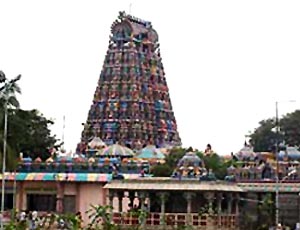 The Pillayar temple is situated 12 kms from Karaikudi on the national highway proceeding to Thiruppathur. It is a Ganesa temple. This beautiful cave temple of the Pandya period reflects fine architecture of that period.
The Pillayar temple is situated 12 kms from Karaikudi on the national highway proceeding to Thiruppathur. It is a Ganesa temple. This beautiful cave temple of the Pandya period reflects fine architecture of that period.
The presiding deity of the Pillayar temple is Pillayar. It is a bas-relief sculpture on the wall of the cave and named as Karpaga Vinayagar. The idol here is different from other pillayar idols. This idol has only two hands instead of the usual four. Apart from this, there are no weapons in his hands, quite different from the other idols.
The image of the Pillayar temple is said to be the earliest image that would have been made when Pillayar worship was introduced in Tamil Nadu. It also contains the inscriptions of this temple. The Nagarathar community took charge of the administration of this temple during the 12th century. It is still maintained by them.
Lord Siva is always represented with four arms. But strangely he is found with two arms in this temple. The vatteluthu inscriptions of the 7th century A.D. can be seen in this Pillayar temple. The sculpture of Ashta Lakshmin is also in the mandapam of this temple.
The important festivals of the Pillayar temple are the Vinayaga Chathurthi day (August-September) and January 1st. Everyday, a large number of devotees comes here to worship the deity. On the Vinayaka Chathurthi day, the deity is offered a giant size Kozhukkattai (Modhaga), which weighs several kilos. It takes 3 or 4 days for steaming the Kozhukkattai.





















